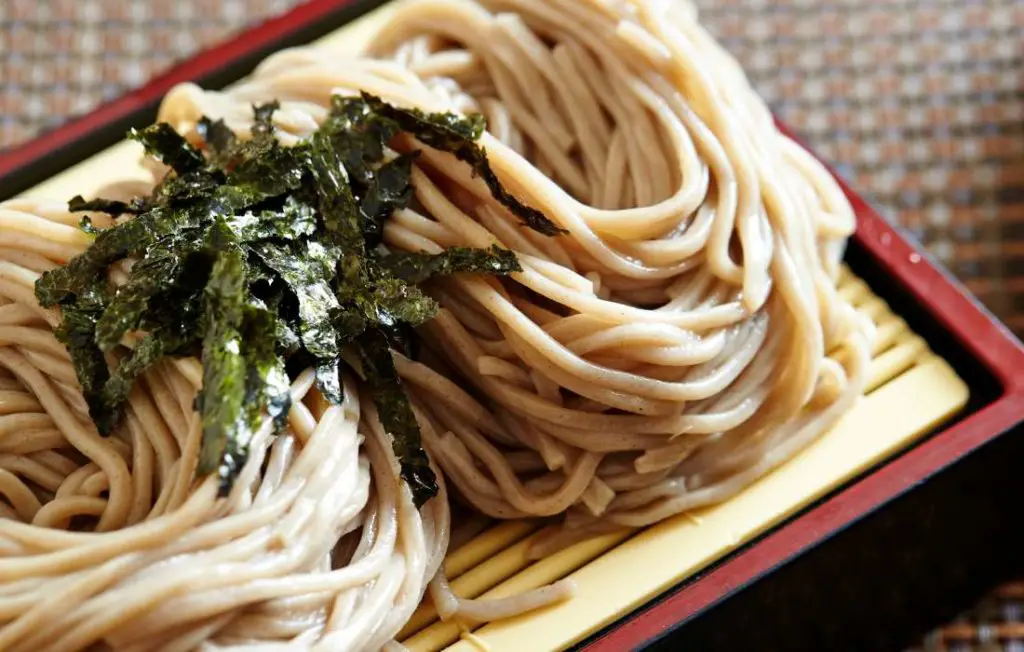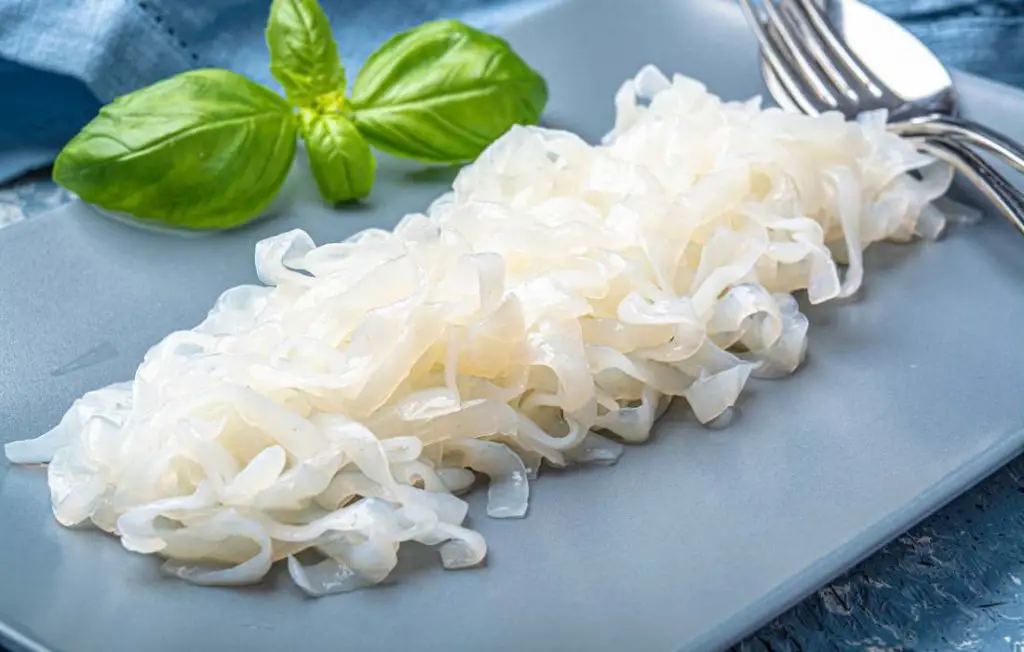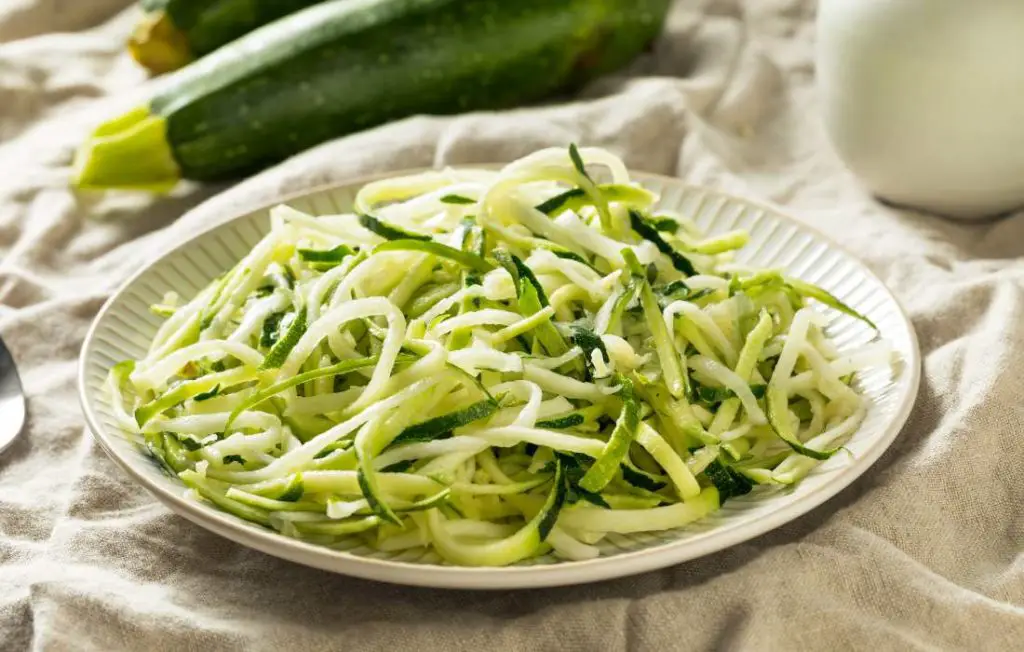Are there low-histamine noodles? If you’re constantly fighting a battle with histamine sensitivity, you might wonder whether there are noodles you can enjoy on a low-histamine diet.
Let’s dive deeper into the world of low-histamine noodles, where deliciousness meets digestion harmony, and discover low-histamine noodle options to enjoy.
As you might know, noodle options are as diverse as a box of crayons. In other words, there’s a lot of choices, from wheat noodles to rice noodles to soba noodles, and newer varieties, such as Shirataki noodles.
You can also make your own low-histamine noodle substitutes by spiralizing low-histamine vegetables.
Let’s look at some low-histamine noodle options you can enjoy on a low-histamine diet.
Rice Noodles
Rice noodles are like the chameleons of the noodle world. Made from rice flour, corn starch, and water, these starchy wonders blend seamlessly with any dish and take on the taste of the sauce you place on them.
Rice noodles also cook up quicker than a snap of your fingers. If you blanch them in boiling water, they’re done in seconds. Also, they don’t undergo fermentation, which would boost their histamine content. But do rice noodles contain histamine?
Most people on a low-histamine diet can tolerate rice noodles without raising their body’s histamine level or aggravating histamine intolerance symptoms.
However, you should keep a food diary where you document your symptoms after adding a new food. Look for correlations between eating a new food and a worsening of histamine intolerance symptoms.
One downside of rice noodles is they’re high in carbohydrates and contain little fiber, making them less blood sugar friendly than Shirataki and zoodles, two low-histamine noodles we’ll talk about soon.
However, they’re gluten free, meaning you can enjoy them on a gluten-free diet. (1)

Soba Noodles
Soba noodles, made from buckwheat, a low-histamine grain, have a nutty flavor that’s immensely satisfying. They’re ideal for cold noodle salads or enjoying in a steaming bowl of broth on a chilly day. They’re popular in Japanese cuisine.
But do they contain other ingredients of concern? Some commercial soba noodles contain small amounts of wheat flour from contamination, so, eating commercial soba noodles could cause issues if you have gluten sensitivity or a wheat allergy.
Soba noodles cause a less sharp rise in blood sugar than wheat or rice noodles and their protein content is usually higher, making them a smarter choice from a health standpoint. (2)
Overall, soba noodles are a low-histamine food, but individual tolerance to foods vary, so it is always best to consult with a healthcare professional or a certified dietician to determine the most appropriate diet for your specific needs.

Shirataki Noodles
Are you familiar with Shirataki noodles ?They’re a low-carbohydrate, gelatinous noodle made from the konjac plant. Like Soba noodles, they’re popular in Japanese cuisine.
Since they’re low in carbohydrates and calories, they’re also the rage in the weight loss community as they have little impact on your blood sugar or waistline.
Manufacturers make Shirataki noodles, also known as miracle noodles, by adding water to konjac flour and shaping them into noodles that resemble pasta. Some people say they have a faint “fishy” flavor, but you can easily cover that with a low-histamine sauce.
These versatile noodles also contain no gluten, wheat, or dairy products, making them suitable for a variety of diets.
The only downside of Shirataki noodles is they’re harder to find than rice or buckwheat noodles. Fortunately, most grocery stores now sell them. If yours doesn’t, you can either order them online or at an Asian food market.
They come in various shapes, such as long, pasta noodles – ideal for your next pasta dish or stir-fry. You can also make salads and soups with various shapes of Shirataki noodles. Experiment and see which shapes you like the most.
Gluten-Free Pasta Noodles
Many people with histamine intolerance can safely enjoy gluten-free pasta noodles. They’re usually made from quinoa, corn, or rice, which are all low-histamine grains and seeds.
I’ve used and enjoy Tolerant Organic Green Lentil Rotini, made from green lentils, a low-histamine food. It’s also a gluten-free option. Being a vegan food product, it also contains more plant-based protein than most pasta noodles.

Zoodles
Zoodles are zucchini noodles. You can make them at home by spiralizing zucchini using a spiralizer or with a vegetable peeler. (More cumbersome) Since zucchini, a type of squash, is a low-histamine vegetable, the noodles you make from them are too.
Zoodles are also low in calories and low in carbohydrates, so they’re easier on your blood sugar than rice or soba noodles. If you’re watching your waistline or blood sugar, zoodles or Shirataki noodles are your best bet.
Be Mindful of the Sauces You Put on Low-Histamine Noodles
Though you have options for low-histamine noodles, be mindful of the sauces you put on them. Some sauces that taste yummy on noodles can be high in histamine because they’re fermented.
These include oyster sauce, fish sauce(4), and soy sauce (5). Plus, avoid tomato-based sauces, as tomatoes are histamine liberators.
Some forms of vinegar that people put on noodles may contain histamine too. If you crave vinegar, your best choices are white vinegar or apple cider vinegar, as they tend to be lower in histamine than Balsamic vinegar. Rice vinegar is another low-histamine option.
Also, be aware that a study found that some fruit vinegars, like pomegranate and blueberry vinegar, blocked the release of histamine from mast cells, making it potentially beneficial for histamine intolerance. (3)
You can also use coconut aminos and apple cider vinegar to make a mock soy sauce that’s low in histamine. This sauce comes in handy if you’re making a rice noodle stir fry and shouldn’t increase your body’s histamine burden.
Enjoy Low-Histamine Noodles Safely
We’ve covered the basics of low-histamine noodles and their delicious varieties. Now, it’s time to hit the kitchen, embrace those noodles, and create culinary wonders that’ll make your taste buds dance like nobody’s watching.
You have options for low-histamine noodles but be sure to use the freshest ones to avoid the problem of histamine-producing bacteria invading and boosting their histamine content.
So, grab those low-histamine noodles, whip up your favorite sauce, and let the noodle magic unfold. Your tummy will thank you, and you’ll be one happy camper, noodle-style! Happy cooking!
References:
- Roszkowska A, Pawlicka M, Mroczek A, Bałabuszek K, Nieradko-Iwanicka B. Non-Celiac Gluten Sensitivity: A Review. Medicina (Kaunas). 2019 May 28;55(6):222. doi: 10.3390/medicina55060222. PMID: 31142014; PMCID: PMC6630947.
- Skrabanja V, Liljeberg Elmståhl HG, Kreft I, Björck IM. Nutritional properties of starch in buckwheat products: studies in vitro and in vivo. J Agric Food Chem. 2001 Jan;49(1):490-6. doi: 10.1021/jf000779w. PMID: 11170616.
- Miyazaki, Y., Kurata, Y., Koga, H., Yamaguchi, S., Tachibana, H., & Yamada, K. (2016). Involvement of polyphenol compounds in histamine release suppression by pomegranate vinegar. Journal of The Japanese Society for Food Science and Technology-nippon Shokuhin Kagaku Kogaku Kaishi, 63, 63-69. https://doi.org/10.3136/NSKKK.63.63.
- Brillantes, S., Paknoi, S., & Totakien, A. (2002). Histamine Formation in Fish Sauce Production. Journal of Food Science, 67, 2090-2094. https://doi.org/10.1111/J.1365-2621.2002.TB09506.X.
- Kim, J., Park, H., Kim, M., Ahn, H., & Byun, M. (2003). Survey of Biogenic Amine Contents in Commercial Soy Sauce. Korean Journal of Food Science and Technology, 35, 325-328.

